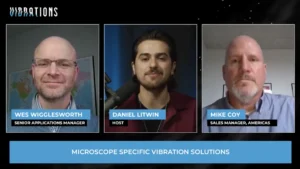Semi-Living Cyborg Cells Generate Hope Within the Scientific Medical Community
Did James Cameron see the future back in 1984? The Terminator may have been a cyborg piece of science fiction, but still, one portion of that movie is coming to life in the form of semi-living cyborg cells through a complex chemical process developed by scientists to mimic living cells without being able to divide and grow.
“The cyborg cells are programmable, do not divide, and preserve essential cellular activities and gain non-native abilities,” said biomedical engineer Cheemeng Tan from the University of California, Davis.
Biomedical advancements, such as the use of AI and cell therapy, bring with them the potential for myriad applications. One such promising application is the use of cyborg cells in oncology. Lab testing on tissue samples is underway, and the hope is cyborg cells could one day be used to deliver drugs to specific parts of the body.
Where might this technology take science in the coming years? Stephane Budel, Ph.D., a Founding Partner at DeciBio, and Andrew Aijian, Ph.D., a Partner at DeciBio, a strategy and market intelligence company for the precision medicine industry, provided some clues.
Stephane and Andrew’s Thoughts
“This is a very exciting paper. The advance of cyborg cells can have several therapeutic applications. A clear one is in oncology. There has been a lot of exciting development recently with CAR Ts. And people are discussing is it going to be autologous cells that come from the patient or allogeneic cells that would be easier to work with, where you would have like a massive batch of cells that you can use.
And there is now a third type of cells you could use: cyber cells. And in this case, you add synthetic polymers. The cells retain a number of functions, but they stop dividing. You can imagine people starting to be looking at a variety of different types of polymers and a variety of different types of synthetic pathways that they do to address cancer cells and beyond.” – Budel
“Yeah, this is the first I’ve been exposed to cyborg cells. The first I’m hearing of it. And I think what will be interesting is to see how this approach gets applied to different cell types; bacterial cells, human cells, cells with different functionalities, et cetera. And you can sort of really start to explore a vast space of possibilities and how you can use these types of cells for health applications, synthetic biology, industrial applications, especially if you can introduce non-native capabilities. In the paper, they cited the ability of these cells to be more resistant to peroxide environments, which has implications in industrial applications.
There’s sort of a huge space of functionalities and capabilities that you can explore. And I’m sure that researchers will be spending a lot of time optimizing the cells and the conditions to create many novel functionalities.” – Aijian
“Something we discussed as well is the need for these cells to actually evade the immune system. And there is certainly something that you can engineer in these cells as well that will be important if you want to inject them back into humans to treat virus conditions.” – Budel









